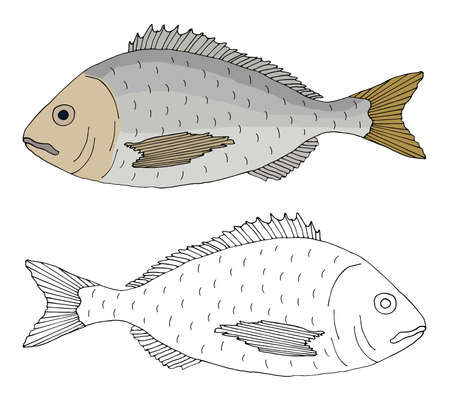Introduction to Photoperiod and Fish Behavior
When we talk about how fish behave—whether it’s their breeding, feeding, or even the way they interact with each other—one key environmental factor often comes up: the photoperiod. Simply put, photoperiod refers to the length of time an organism is exposed to light within a 24-hour period. In nature, this means the changing hours of daylight and darkness as seasons shift. For fish living in lakes, rivers, or oceans, these changes serve as powerful cues that help them know when to spawn, migrate, or become more active—or even aggressive.
If you’re raising fish at home, like my kids and I do with our freshwater aquarium, understanding photoperiod isn’t just “science talk”—it’s super practical! Just like kids rely on routines for bedtime and mealtime, fish depend on regular patterns of light and dark to regulate their internal clocks. When we shift the lighting schedule in our tanks (sometimes accidentally!), we can see real changes in their behavior. Some fish might start chasing each other more, while others may suddenly show signs that they’re ready to lay eggs.
So why does photoperiod matter so much? In the wild, increasing daylight during spring tells fish it’s time to get ready for mating and raising young. As fall approaches and days get shorter, many species slow down and prepare for winter. At home, replicating these natural cycles by adjusting aquarium lighting can encourage healthy behaviors—and make caring for our finned friends a richer experience for the whole family. In this article series, we’ll explore exactly how photoperiod shapes spawning cycles and aggression in fish, both in their native habitats and in our living rooms.
2. The Science Behind Spawning Cycles
Have you ever wondered why your pet fish suddenly start building nests or displaying brighter colors at certain times of the year? The secret lies in a fascinating process called photoperiodism, which is how changes in daylight hours (photoperiod) signal to fish that its time to spawn. Just like how we might feel more energetic with longer summer days, many fish rely on these natural cues to trigger breeding behaviors.
How Light Exposure Influences Fish Spawning
Fish are incredibly sensitive to their environment, and one of the most influential factors is the amount of light they receive each day. In nature, the lengthening days of spring and early summer signal to fish that its time to reproduce. This adaptation helps ensure that their young have the best chance of survival when food is abundant and water temperatures are just right. In home aquariums across America, hobbyists often mimic these seasonal changes by adjusting tank lighting schedules to encourage spawning.
Popular Fish Species and Their Spawning Responses
Different species respond uniquely to changes in photoperiod. Here’s a quick overview of some popular American aquarium fish and how light affects their spawning cycles:
| Fish Species | Typical Spawning Trigger | Photoperiod Sensitivity |
|---|---|---|
| Betta (Betta splendens) | Increased daylight hours, warmer water | High – More active with longer light exposure |
| Goldfish (Carassius auratus) | Gradual increase in light and temperature | Medium – Prefer slow seasonal shifts |
| Zebra Danio (Danio rerio) | Sustained 12-14 hours of light per day | High – More frequent spawning with extended light |
| Angelfish (Pterophyllum scalare) | Slightly longer daylight periods and stable conditions | Moderate – Responds best to consistent routines |
Fun Family Fact:
If you’re raising fish with your kids, try gently increasing the tank’s light duration in the spring. Watch together for signs like nest building or courtship dances—it’s a great way to turn science into a fun family experiment! Remember, every species is different, so learning about your fish’s natural habitat can help you create the perfect environment for spawning success.

3. Understanding Aggressive Behavior Linked to Light
When it comes to fish behavior, the amount of daylight—known as photoperiod—does much more than just set the mood in your tank. For many home aquarists, noticing their fish becoming more territorial or nippy at certain times of year can be a bit puzzling. But here’s where it gets interesting: longer or shorter periods of light directly influence how fish interact with each other, especially when it comes to aggression.
The Role of Photoperiod in Fish Temperament
In nature, longer days often signal the start of spawning season for many species. As daylight increases, hormones surge, and fish become more protective of their chosen territories. This heightened sense of ownership can look like chasing away tankmates, flaring fins, or even mild fighting. It’s their way of saying, “This is my space!” On the flip side, shorter days tend to calm these instincts down, and you’ll likely notice your aquarium community getting along much better.
Real-Life Scenarios for Home Aquariums
Let’s say you have a group of cichlids or bettas at home. As spring approaches and you naturally leave the lights on a bit longer—or if sunlight streams into the room—your usually peaceful fish might start staking out corners or building bubble nests. You may witness more posturing and even some harmless shoving matches. This isn’t bad behavior; it’s simply their biology responding to environmental cues.
What Can Parents and Kids Learn?
If you’re exploring aquariums as a family hobby, this is a fantastic opportunity to observe science in action! Kids can help track how long the lights are on each day and keep a journal of any changes they notice in their fish’s behavior. Discuss why animals react this way and how we can make our aquatic friends feel safe by adjusting lighting patterns if needed.
Understanding the link between photoperiod and aggression helps us create happier, healthier tanks—and opens up great conversations about animal behavior right at home.
4. Tips for Managing Photoperiod at Home
If you’re an American fish keeper, understanding and managing photoperiod at home can make a real difference in your tank’s harmony and health. Here are some hands-on tips and tricks we’ve learned to help you create a peaceful environment, reduce aggression, and encourage healthy spawning cycles—right in your living room!
Using Timers: The Modern Fish Keeper’s Best Friend
Investing in a reliable timer is one of the simplest ways to regulate your aquarium’s light schedule. Consistent lighting reduces stress, keeps aggression in check, and mimics natural day-night rhythms that many species rely on for spawning cues. Most American pet stores carry plug-in digital timers or smart plugs that can be easily programmed from your phone.
Sample Lighting Schedule Table
| Species Type | Recommended Daylight Hours | Notes |
|---|---|---|
| Tropical Community Fish (e.g., Tetras, Guppies) | 10-12 hours | Promotes spawning; reduces night-time aggression |
| Cichlids | 8-10 hours | Shorter days may reduce territorial fighting |
| Goldfish & Coldwater Species | 8-12 hours | Mimic local seasonal changes for healthiest cycles |
Adjusting Lighting for Seasonal Changes
Just like us, fish notice the seasons—even indoors! In the U.S., daylight hours change throughout the year. Gradually adjust your tank’s lighting schedule as seasons shift. For example, extend daylight by 30 minutes each week as spring approaches to gently cue breeding behaviors without shocking your fish.
Seasonal Tip:
If you live in northern states where winter days are short, resist the urge to compensate with extra-long artificial “days.” Too much light can trigger excessive aggression or stress. Stick close to natural sunrise/sunset times for your region.
Creating Calm Spaces: Avoiding Overstimulation
Avoid placing tanks near windows with unpredictable sunlight or in rooms where lights are turned on and off at random. Unpredictable light patterns can confuse fish and disrupt their natural cycles, sometimes leading to increased aggression or failed spawns.
Quick Checklist for Healthy Tank Lighting:
- Use an automatic timer for consistent photoperiods.
- Mimic natural sunrise/sunset times as closely as possible.
- Adjust schedules seasonally—gradually!
- Avoid sudden changes in light duration or intensity.
- Provide shaded areas in the tank so fish can retreat if needed.
By taking these practical steps to manage photoperiod, you’ll not only support healthy spawning but also keep those “fishy tempers” under control—making life better for both your aquatic pets and your family watching them grow and thrive!
5. Family Experiences and Observations
As parents who love sharing the joys of aquarium keeping with our kids, we’ve had some truly eye-opening moments while adjusting the photoperiod in our home tanks. One weekend, after noticing our cichlids seemed a bit on edge and were chasing each other more than usual, we decided to tweak the light schedule together as a family project. We shortened the daytime light by an hour and watched what happened over the next week.
To our surprise, not only did the fish become calmer, but we also noticed that one pair started preparing a nest! My 10-year-old daughter was thrilled to see the spawning behavior up close—something she’d only read about in her science books before. This sparked a whole dinner table conversation about how light can signal breeding time for fish, just like seasons affect animals outdoors.
We’ve heard similar stories from other families in our local aquarium club. One dad shared how his son’s betta became less aggressive with shorter evening lights, making it safer to add tank mates. Another mom told us her goldfish started displaying courtship dances after a gradual increase in morning light. These real-life experiments have become teachable moments—not just about biology, but about patience and observation.
If you’re thinking of adjusting your aquarium’s lighting at home, here are some family-tested tips: Make small changes (15-30 minutes at a time), involve your kids in tracking fish behavior with simple notes or photos, and always watch closely for signs of stress or aggression. It’s amazing how these little tweaks can bring your family closer and help your fish thrive!
6. Conclusion: Striking the Right Balance
As we’ve explored, photoperiod—the daily cycle of light and darkness—plays a powerful role in shaping both the spawning cycles and aggressive behaviors of our aquarium fish. By understanding how light exposure cues natural rhythms, families can create environments that support healthy breeding while reducing unnecessary stress and conflict in their tanks. The key takeaways? First, longer daylight hours often stimulate spawning, while abrupt or excessive lighting changes may trigger territorial disputes or aggression. Second, consistency matters: gradual adjustments to your tank’s lighting schedule help fish feel safe and secure. Most importantly, remember that each species has unique needs, so a little research and observation go a long way.
We encourage families to approach photoperiod experimentation as a fun, learning adventure together! Involve your kids by tracking behaviors, making careful changes, and recording results in a family “fish log.” Not only will you nurture vibrant aquatic life, but you’ll also teach valuable lessons about responsibility and respect for living creatures. With thoughtful adjustments and a spirit of curiosity, your home aquarium can become a thriving, harmonious underwater world—right in your living room.


